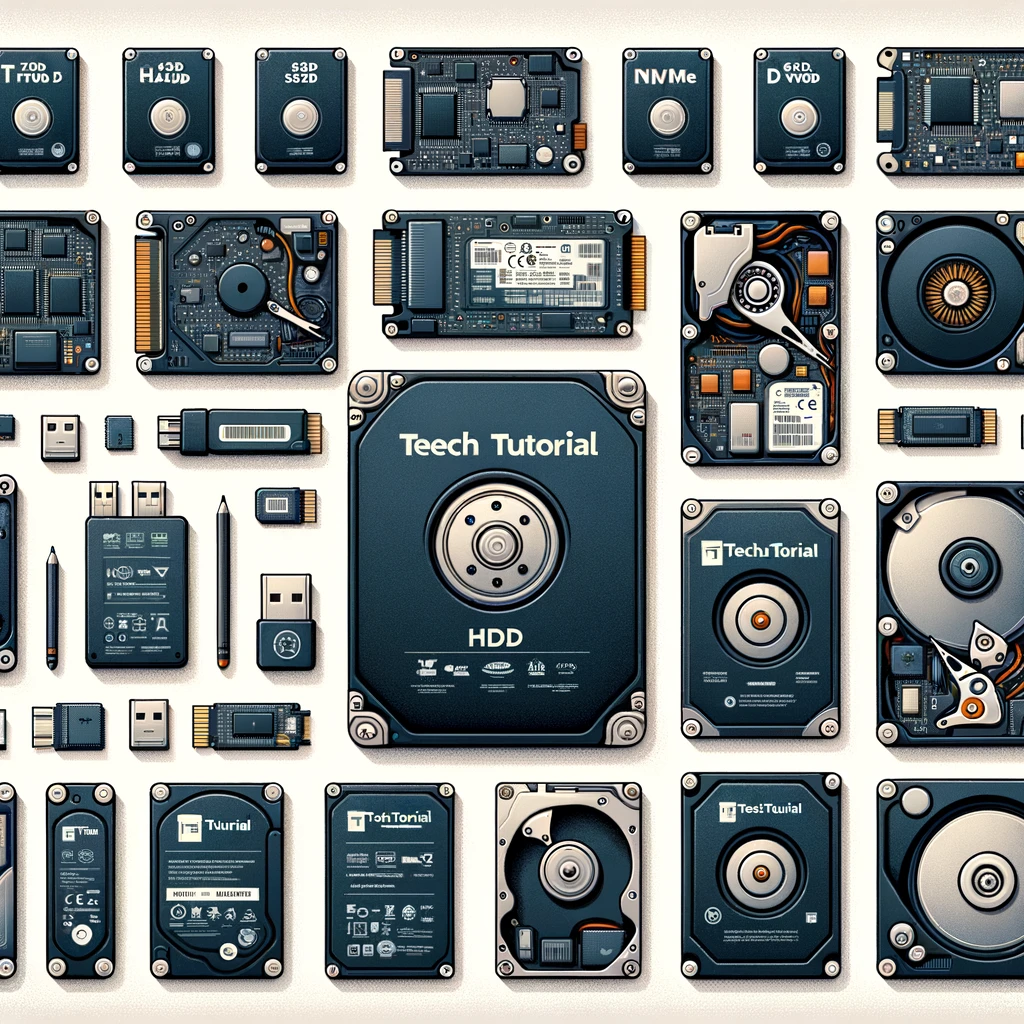In the digital era, the significance of data storage cannot be overstated. Hard drives, the cornerstone of data storage, have undergone remarkable evolution, branching into various types each suited for specific needs. This comprehensive guide delves into the diverse world of hard drives, offering an in-depth analysis of each type, from traditional HDDs to cutting-edge NVMe drives, and comparing their suitability for personal and enterprise applications.
Types of Hard Drives and Their Evolution
1. Hard Disk Drives (HDDs)
Traditional HDDs:
- Function: Utilize magnetic storage with rotating disks.
- Pros: Cost-effective, higher storage capacity.
- Cons: Slower speeds, susceptible to physical damage.
Enterprise HDDs:
- Enhanced for: Continuous operation and high workloads.
- Pros: High capacity, advanced data protection.
- Cons: Higher power consumption than SSDs.
2. Solid State Drives (SSDs)
Personal SSDs:
- Function: Use flash memory, no moving parts.
- Pros: Faster data access, more durable.
- Cons: More expensive per GB, limited write cycles.
Enterprise SSDs:
- Optimized for: Performance and reliability in servers.
- Pros: Superior performance, energy-efficient.
- Cons: Higher cost, complex data recovery.
3. Hybrid Drives (SSHDs)
- Combination: Features of HDDs and SSDs.
- Pros: Balanced performance, cost-effective.
- Cons: Limited SSD capacity, complexity.
4. NVMe Drives (Non-Volatile Memory Express)
- Advanced SSDs: Connect via PCIe interface.
- Pros: Exceptional speed, low latency.
- Cons: Higher price, requires compatible hardware.
Comparative Analysis Across Different Sectors
Performance
- NVMe Drives: Top-tier in speed, ideal for intensive tasks.
- SSDs (Personal & Enterprise): Fast, reliable, suitable for a wide range of applications.
- HDDs (Traditional & Enterprise): Slower but improving; enterprise versions are optimized for large-scale operations.
- SSHDs: A middle ground, offering better performance than traditional HDDs.
Capacity and Price
- HDDs: Offer the best cost-per-gigabyte, with enterprise versions providing massive storage options.
- SSDs: More expensive but increasingly affordable; enterprise SSDs offer cost-effective solutions for high-performance needs.
- NVMe Drives: High cost, typically lower capacities but unmatched speed.
- SSHDs: Good balance of cost and capacity, suitable for moderate storage needs.
Durability and Reliability
- SSDs & NVMe Drives: More durable due to no moving parts; enterprise SSDs are built for endurance.
- HDDs: Mechanical nature makes them more prone to damage; enterprise versions are designed for resilience.
- SSHDs: Inherit HDD vulnerabilities but are bolstered by the SSD component for frequently accessed data.
Energy Consumption
- SSDs & NVMe Drives: Lower power consumption, ideal for energy-efficient systems and laptops.
- HDDs: Higher energy requirements, especially in enterprise models.
- SSHDs: More efficient than traditional HDDs but not as much as SSDs.
Use Cases
- NVMe Drives: High-end computing, gaming, professional workstations.
- Enterprise SSDs: Data centers, high-demand server environments.
- Personal SSDs: General computing, external storage solutions.
- Enterprise HDDs: Large-scale data storage, archival needs.
- Traditional HDDs: Budget-friendly storage, backup solutions.
- SSHDs: General-purpose use where both capacity and speed are considerations.
Conclusion
The landscape of hard drives is diverse, with each type catering to specific needs and applications. NVMe drives represent the pinnacle of speed and performance for personal use, while enterprise SSDs and HDDs address the demands of large-scale, continuous operations in data centers. Traditional HDDs and personal SSDs continue to be reliable options for everyday computing and storage. The choice of a hard drive should be guided by the specific requirements of performance, capacity, durability, and cost, aligning with the user’s or organization’s needs. As technology progresses, we can anticipate further advancements in storage solutions, enhancing efficiency and accessibility across all sectors.
